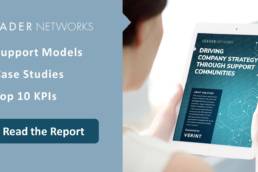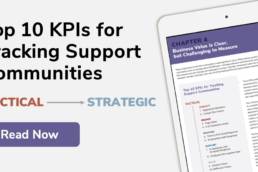Member engagement is a popular term these days, applied to everything from customer loyalty programs to Facebook games to political campaigns. There are tools that purport to track every “like” or tweet as evidence that your members, or customers, or just visitors, are listening and “engaged”.
I’m skeptical. I think this very useful and important term is being misused, applied to a wide range of online activities in today’s engagement-obsessed social media world. Too often, a moment of fleeting attention is classified as an engagement event. In our online community-focused world, such transitory winks of attention might be flirtatious, but they certainly don’t constitute engagement!
As a researcher by training and inclination, I’m taking a closer look at “engagement,” what it means and how it applies to our online social business activities. The dictionary definition is quite clear, and conveys a serious level of attention and commitment.
en·gage [en-geyj] Show IPA verb, -gaged, -gag·ing. verb (used with object)
to occupy the attention or efforts of (a person or persons): He engaged her in conversation.
to secure for aid, employment, use, etc.; hire: to engage a worker; to engage a room
to attract and hold fast: The novel engaged her attention and interest.
to attract or please: His good nature engages everyone.
to bind, as by pledge, promise, contract, or oath; make liable: He engaged himself to repay his debt within a month.
None of these definitions suggest a passing glance or a single, isolated click would qualify as “engagement.” On the contrary, a key aspect of engagement is that it occurs over a span of time, not just for an instant. As with all aspects of human behavior, engagement is not a fixed quantity. It is dynamic and variable. It’s intensity ranges from mild interest to active attention to deep and compelling fascination.
So, armed with a definition and a lot of experience with online communities, here’s a framework for measuring member engagement. We use a calendar quarter (three months) as the measurement period for this example:
What do the scores mean?
- A member with a score below 10 is not engaged
- A score in the 13-26 range signals a member who exploring the community but not fully engaged with other members
- Scores in the high 20s to around 50 indicate a member who is grown comfortable sharing with fellow members, and is becoming more fully engaged
- A score over 50 points to a member who is highly engaged and involved in the life of the community and someone who is probably considered a leader by other members of the community
How can these scores help you measure and grow your community?
Consider this: if those scores represented the revenue value of a member, which kind of members would most want in your community? Right – the most engaged ones! In this model, a small number of engaged members is worth much more than large number of members with little or no actual engagement. And this is why defining member engagement more precisely is so important. A visit does not constitute engagement; a newsletter open is not engagement; a “like” or a re-tweet are not, in themselves, an engaged activity. Engagement means continuing attention and activity from the member over time.
Part two of this post discusses the key factors that can create, grow and sustain member engagement.
3 Comments
Add comment Cancel reply
This site uses Akismet to reduce spam. Learn how your comment data is processed.




I don’t think one should completely dismiss “weak” interactions like a Twitter follow. The set of metrics that you have provided are very good at identifying someone who has a reasonable level of interaction with an organization. However, sometimes it’s useful to be able to differentiate amongst people with weak interactions as well — in fact, those at the weakest end of the scale may be the greatest threat for leaving the organization and may be people that you want to target with outreach campaigns.
To help create some more refinement at the “low end” I think it can also be useful to track not just logins, but average number of pages viewed per “time period” (e.g. a week) and the average time spent on the site per the same time period. For “lurker” types, these can give a better indication of whether they have a somewhat stronger attachment to the organization. It may also makes sense to target them with a specific outreach campaign — they know about the resources available to them, they just need to be encouraged to participate more. For those with the weakest attachments (but still aware of the resource available) you may want to reach out to them and find out why the existing resources don’t satisfy their current needs.
Excellent points – the elusive but ever important lurker (I prefer active reader term) is critical in the success of a community as they often do more with the information they learn online in the offline world. Your advice to reach out to those with the weaker attachments is very important and can often shift a viewer to a doer, online.
I think this is very interesting information. I’ve been thinking about creating a membership community on my blog so I could create a higher, more personal level of interaction with my committed readers and this gives me a nice benchmark to use in planning. I would also like to agree with the other comment about not completely dismissing weak interactions. Case in point. A few years ago as a cost cutting measure a global direct sales company I worked for at the time cut services and resources to representatives who only occasionally ordered product. Problem was collectively those occasional orders really added up BIG time so the company had to backpadel which of course cost a LOT of money – of course by that time they’d angered so many people they never did make up the shortfall.